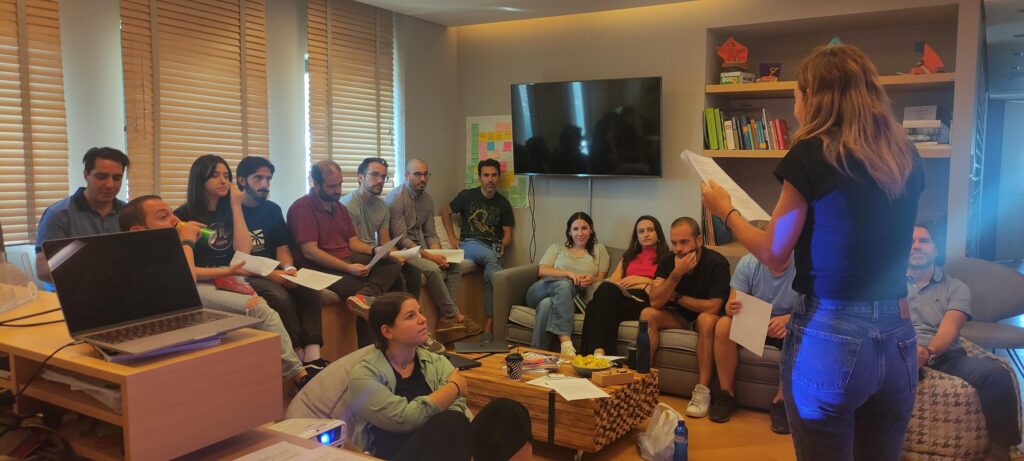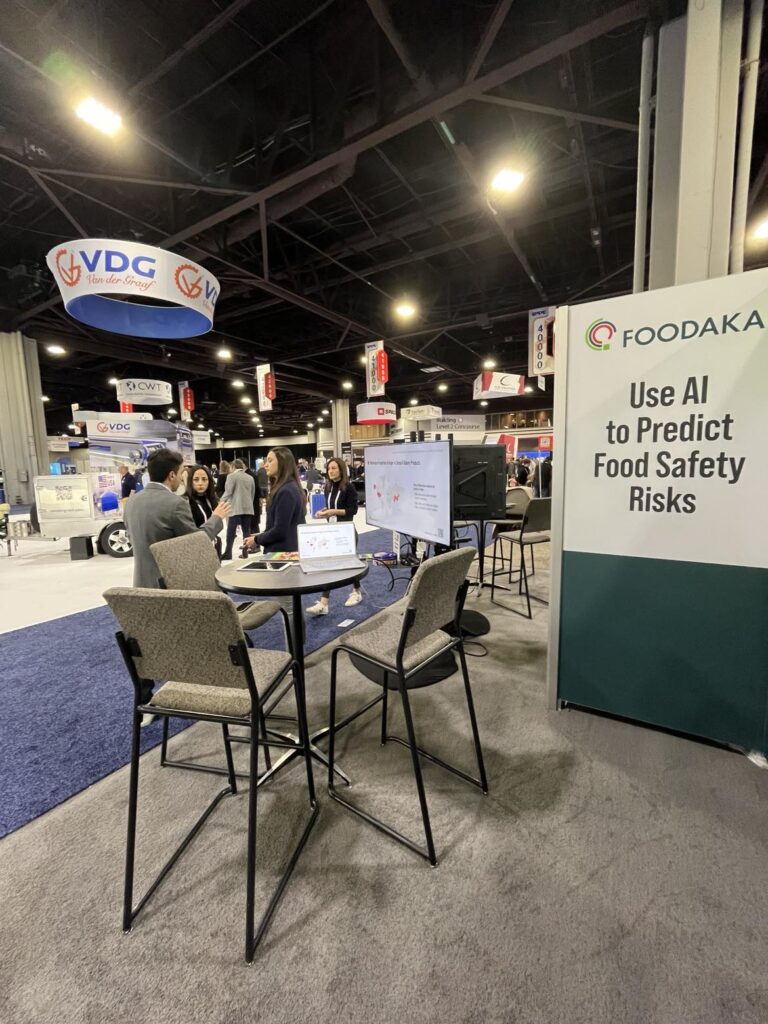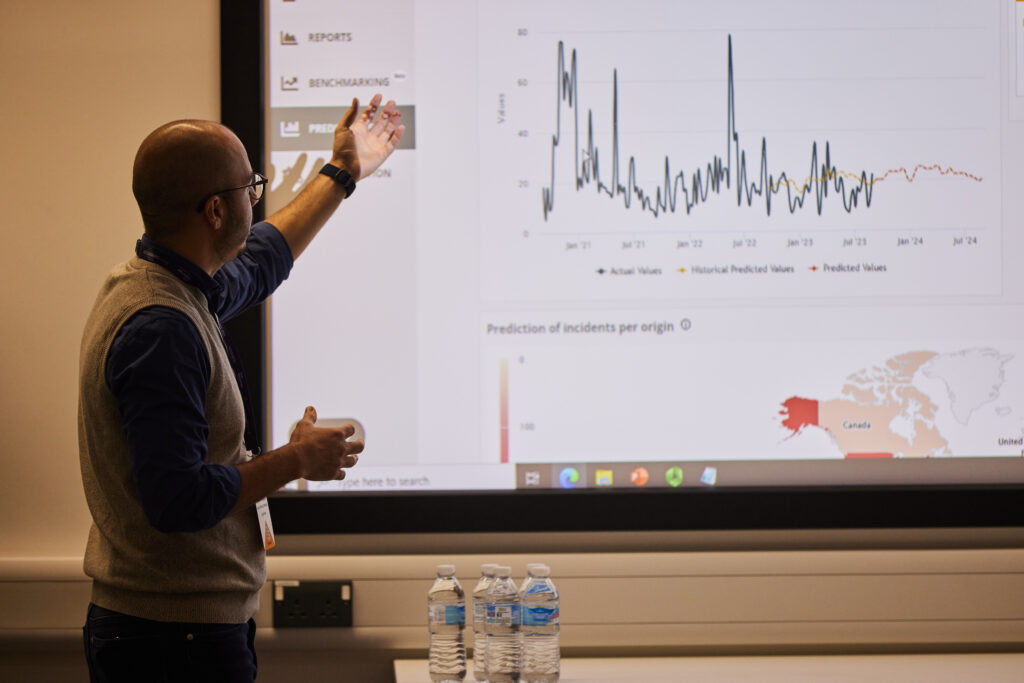In the realm of food safety, the landscape seems to be ever-evolving. I do hear the persistent concerns regarding the efficacy of traditional methods in risk mitigation and compliance assurance. From the challenges faced by FS/QA teams to the need for effective communication with suppliers on food risk prevention, the food industry seems to be ripe for innovative solutions.
Areas of concern for food safety professionals include:
- Disruption in FS/QA Teams: The traditional paradigm often finds itself entangled in the labyrinth of audit preparations, relegating proactive risk assessment to the sidelines. AI emerges as a beacon of hope, capable of streamlining audit procedures, automating mundane tasks, and furnishing real-time insights. This liberation enables FS/QA teams to concentrate their efforts on discerning and mitigating risks effectively.
- Digital Transformation: While the digital frontier beckons with promises of innovation, mastering its intricacies remains a formidable challenge. Enter AI-driven analytics, poised to unravel the complexities of digital platforms, furnishing actionable insights that empower decision-making and risk assessment across diverse systems.
- Collaboration with Suppliers: Effective communication forms the bedrock of proactive risk mitigation with suppliers. AI-driven systems foster transparent channels of communication, nurturing collaborative endeavors aimed at preempting risks and fortifying food safety standards.
- Workforce Competency and Retention: The scarcity of skilled personnel and the imperative of continuous training pose significant hurdles. Here, AI-driven training modules and knowledge-sharing platforms emerge as catalysts, bridging competency gaps and empowering employees with cutting-edge insights in food safety management.
- Infrastructure Upgrades: Aging infrastructure demands perpetual investment to uphold safety standards. Enter AI-driven predictive maintenance systems, poised to anticipate potential failures, optimize resource allocation, and ensure the uninterrupted operation of critical infrastructure.
- Actionable Insights from Horizon Scanning: The transition from checkbox compliance to actionable insights remains a daunting endeavor. AI algorithms, however, hold the promise of transcending this chasm by analyzing voluminous datasets, detecting emerging trends, and furnishing predictive analytics conducive to proactive risk mitigation.
Very often, people expressing such concerns look up to me and ask:
Can AI play a transformative role in addressing these challenges?
I wish I had a simple answer to give. What I usually do, is invite them to join one of our practical, hands-on educational workshops on AI. My intention is to provide them with the background knowledge and required context to give their own answer to this question.

For instance, it was only a few weeks ago that we hosted a workshop titled “AI for Food Risk Forecasting & Prevention” as part of the IPPExpo, the world’s largest annual poultry, feed, and meat technology exposition. This was organized as a closed, invitation-only meeting for a select group of people working on food safety and quality topics. We aimed to clarify key topics related to AI and its applicability for incident forecasting and prevention in poultry, feed and meat:
- We started with an introduction to some AI basics and real-life examples. We wanted to illustrate how data, models and software systems come together to support food risk prevention decisions.
- Then, we dived into two use cases: incident trends’ forecasting and emerging mycotoxin risk prediction. We walked participants through the corresponding predictive analytics dashboards and explained how AI is working behind the scenes. We also explained the different paths that we took in each approach, discuss the potential and limitations of each dashboard.
- Finally, we focused on how we are developing an AI model to estimate the likelihood of salmonella presence in raw poultry, before it leaves an establishment. We talked about aspects such as:
- how could a salmonella likelihood prediction dashboard look like
- relevant data that can be used (e.g. sampling throughout the poultry processing cycle)
- whether adding external data may enhance the predictive capabilities of the model
- if/how using cross-facility/company data can make such a model more accurate

The meeting was very engaging and insightful. In the closing round, participants shared their key takeaways from the workshop:
- Monitoring and Forecasting Trends: AI facilitates real-time monitoring of food safety trends and forecasts, facilitating proactive risk assessment and mitigation planning across the supply chain.
- Sophisticated Modeling for Contamination Forecasting: Predicting the likelihood of microbial or chemical contamination demands elaborate modeling techniques and access to diverse datasets, underscoring the pivotal role of AI in predictive analytics.
- Addressing Data Integration Challenges: Harmonizing heterogeneous internal data remains a formidable challenge. AI-driven solutions offer respite by streamlining data integration processes, enhancing the efficiency and accuracy of predictive models.
This was only a starter to the conversation about AI applications, as there are plenty of topics to explore further. For instance, the group expressed their interest to dive deeper into AI methods and tools that can help address the challenge of heterogeneous data processing, harmonization and integration.
Which are other opportunities that I see ahead?
- Fostering Data Sharing and Interoperability: Standardized protocols for data sharing and interoperability are pivotal for developing robust predictive models. Collaborative efforts among industry stakeholders will foster data-driven insights, therefore fortifying food safety practices.
- Integrating Predictive Capabilities into Management Decisions: The integration of AI-driven predictive capabilities into food safety management software can empower organizations to make informed decisions in real-time. From supplier management to product traceability, AI seems to be able to enhance operational efficiency and risk mitigation strategies.

©Phil Crow 2023
To sum up:
if you ask ChatGPT about the promise and pitfalls of AI in food safety, it will give you something that reads like a political statement:
“As the industry embraces digital transformation, AI emerges as a potent ally, safeguarding consumer health and bolstering trust in the global food ecosystem.”
I am not a big fan of popular buzzwords; I do believe though that a tremendous potential exists. Still, we (technology people) have plenty of work to do in getting ourselves and key food industry stakeholders on the same page.
Funding for this research has been provided by the European Union’s Horizon Europe research and innovation programme EFRA (Grant Agreement Number 101093026). Funded by the European Union. Views and opinions expressed are however those of the author(s) only and do not necessarily reflect those of the European Union or European Commission-EU. Neither the European Union nor the granting authority can be held responsible for them.


